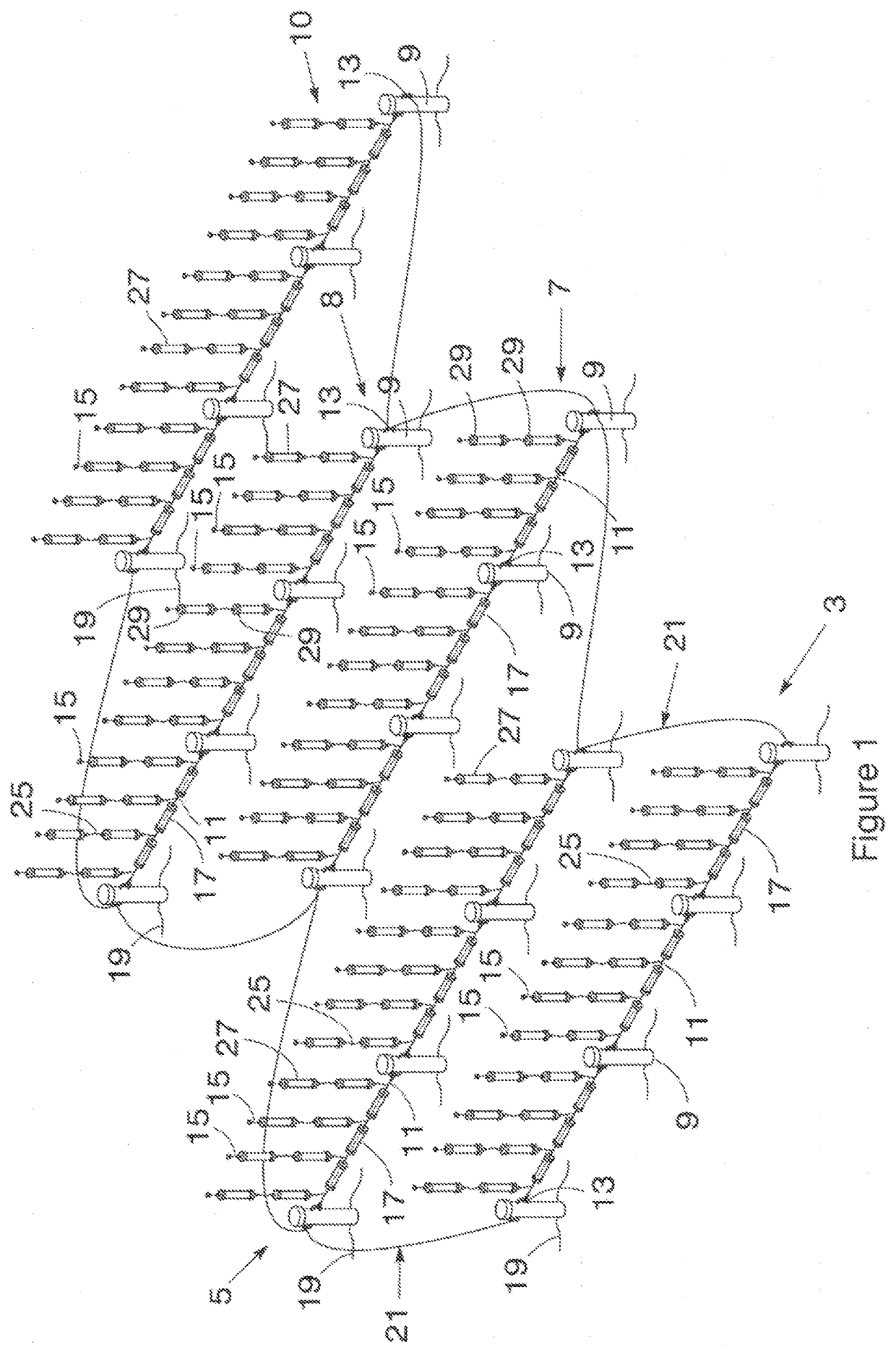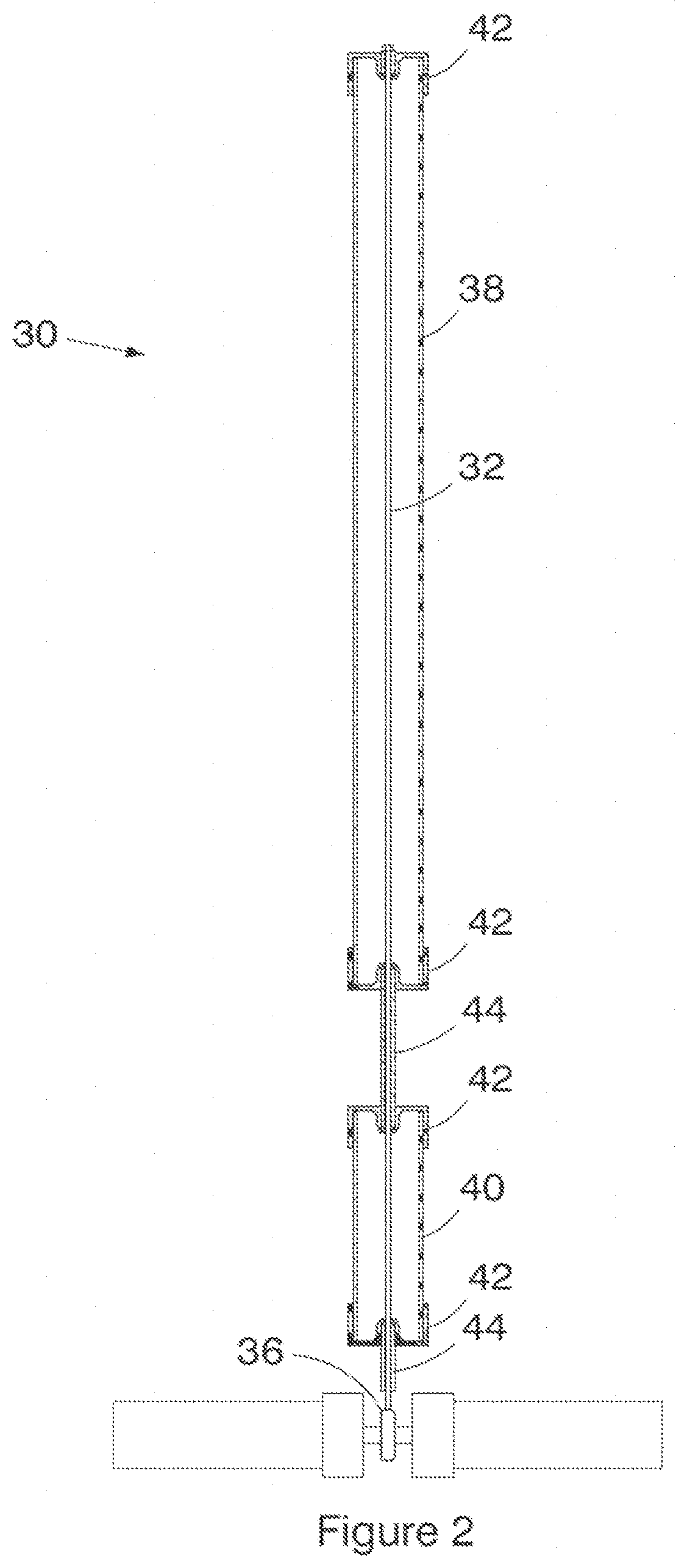Shark barrier
a barrier and shark technology, applied in shark screens, mechanical equipment, transportation and packaging, etc., can solve the problems of not forming a complete barrier, other aquatic creatures such as turtles and dolphins are often caught and killed in the nets, and it is not practical to protect large areas
- Summary
- Abstract
- Description
- Claims
- Application Information
AI Technical Summary
Benefits of technology
Problems solved by technology
Method used
Image
Examples
Embodiment Construction
[0032]In the embodiment of the invention shown in FIG. 1 the shark barrier (1) includes five generally parallel adjacent linear rows (3, 5, 7, 8, 10) of spaced apart anchors (9) interconnected by separate flexible connecting elements, in this embodiment connection cables (11). Each flexible connection cable is secured at one end to a securing formation (13) located at an operatively upper portion of an anchor and at its opposite end to a securing formation (13) of an adjacent anchor. A plurality of spaced apart buoyant resiliently flexible elongate members (15) are secured at one end along a length of each connection cable and extend generally upwardly from the connection cable. The buoyant members (15) are spaced apart by means of tubular members, acting as spacers (17) fitted over the connection cables (11) and in between adjacent buoyant members.
[0033]The adjacent linear rows (3, 5, 7, 8, 10) are anchored into the sea floor (19) to be off-set relative to each other to form a stag...
PUM
 Login to View More
Login to View More Abstract
Description
Claims
Application Information
 Login to View More
Login to View More - R&D
- Intellectual Property
- Life Sciences
- Materials
- Tech Scout
- Unparalleled Data Quality
- Higher Quality Content
- 60% Fewer Hallucinations
Browse by: Latest US Patents, China's latest patents, Technical Efficacy Thesaurus, Application Domain, Technology Topic, Popular Technical Reports.
© 2025 PatSnap. All rights reserved.Legal|Privacy policy|Modern Slavery Act Transparency Statement|Sitemap|About US| Contact US: help@patsnap.com



